Kenwood DRV-320 Handleiding
Bekijk gratis de handleiding van Kenwood DRV-320 (3 pagina’s), behorend tot de categorie Dashcam. Deze gids werd als nuttig beoordeeld door 70 mensen en kreeg gemiddeld 4.5 sterren uit 35.5 reviews. Heb je een vraag over Kenwood DRV-320 of wil je andere gebruikers van dit product iets vragen? Stel een vraag
Pagina 1/3

DRV-320
GPS Integrated Dashboard Camera
INSTRUCTION MANUAL
B5A-2533-00(K)© 2018 JVC KENWOOD Corporation
Setting up the Device <Be Sure to Do This Prior to Using It>
Step1: How to Install/How to Wire
Recommended installation position
Install the device in a position where it will not block the front view of the driver (position where
hidden by the rear-view mirror).
Install the device so that it is within the wiping range of the wiper.
Mounting the device to the center of the windshield behind the rear-view mirror will facilitate
optimal video recording.
CAUTION
When passing the power cord through the front pillar or another part, observe the following
points when performing the wiring work.
Wire the power cord farther forward or farther rearward than the airbag so that it does not interfere with
the airbag.
In the case of a vehicle in which the front pillar cover is fixed in place with special clips or the like, the clips
may need to be replaced after you remove the front pillar cover. For how to remove the front pillar cover,
the availability of replacement parts, and other information, contact the vehicle dealer.
Fix the power cord in place with commercially available soft tape or the like so that it does not interfere
with driving.
1 Conrm that your car is parked in a level area.
2 Use a commercially available cleaning cloth to wipe o any dirt
or grease from the location you are mounting the device.
3 Follow the procedure below to mount the device securely inside
the car.
Confirm the position in which to affix the device, and then affix it. To strengthen
the bond of the adhesive tape, let it set for over 24 hours before use.
Connecting via the provided car charger
1 Connect the provided car charger to the car's lighter socket,
connect the power cord to the device, and then arrange the cord.
2 Turn on the engine.
The power turns on and starts charging the device. The lamp on the car charger
lights green.
3 Let it charge like that for at least 3 minutes.
After it has charged for over 3 minutes, you can use it.
4 Adjust the mounted angle.
When you are actually using the device, make sure that the camera's field of
view is parallel to level ground and that the ground-to-sky ratio is about 6 4.to
6 : 4
Variable angle
(perpendicularly)
80°
95°
5 Remove the protective sheet from the camera lens.
Protective sheet
6 Press and hold the power button until the power turns o. Once
again, press and hold the power button to turn it on again.
• Be sure to turn the power on again whenever you finish adjusting the angle.
In addition, turn the power back on whenever you leave the power on while removing
the device from the bracket or after the angle has changed and you readjust it while
the power is on. The adjusted angle is recorded when the power is turned on
.
Connecting via the CA-DR150 (optional accessory)
• Before connecting the device, be sure to read and understand the instruction manual that comes
with the CA-DR150 (optional accessory), and then mount it safely. Additionally, read about the
switch settings and wiring beforehand.
1 Do the settings for the "Voltage cut-o value settings" and "O
timer settings".
Be sure to read the instruction manual that comes with the CA-DR150 (optional
accessory), and then do the settings.
2 Do the wiring.
The 5-V power supplied to the dashboard camera starts after a certain period (around 20 seconds),
even though the accessory's power is on, to allow the dashboard camera to assess the power
supply's voltage (12 V/24 V).
Power LED
Connect the Dashboard camera and power cord.
Switchbox
Main fuse
Ignition key switch
Fuse Accessory power
supply
Accessory cord (Red)
Connect to a power supply that
can be turned on and off with the
switch.
Fuse (2 A)
Power cord (3.5 m)
Connect to the
mini USB port.
Battery GND
3 Turn the engine key to on and let the device charge like that for at
least 3 minutes.
You can use it after it has charged for 3 minutes.
4 Adjust the mounted angle.
When you are actually using the device, make sure that the camera's field of view is
parallel to level ground and that the ground-to-sky ratio is about 6 to 4.
Refer to the illustration in step 4 of "Connecting via the provided car charger".
5 Remove the protective sheet from the camera lens.
Refer to the illustration in step 5 of "Connecting via the provided car charger".
6 Press and hold the power button until the power turns o. Once
again, press and hold the power button to turn it on again.
• Be sure to turn the power on again whenever you finish adjusting the angle. In addition,
turn the power back on whenever you leave the power on while removing the device
from the bracket or after the angle has changed and you readjust it while the power is
on. The adjusted angle is recorded when the power is turned on.
Step 2: Inserting and Formatting a Memory Card
1 Press and hold the power button until the power turns o.
2 Conrm that the power is o, and then insert your memory card into
the device.
Camera lens
To remove the memory card, press it so that it comes out a little, and then pull the
memory card out. After that, turn the power on again.
3 Press and hold the button until the power turns on.
4 Format the memory card.
As a rule of thumb, format the memory card before you use it and about once every
two weeks. See "Formatting the memory card" for more about these operations.
If you do not use parking mode, the setup ends here for you.
If you plan on using parking mode, continue to Step 3.
Names and Functions of Parts
The following explains how to do the device's basic operations and settings.
1
2
3
4
5698 0
7
1 Insertion slot for the mounting bracket
2 Reset button Resets the device.
3 Mini USB port (DC5V)
Connect the provided car charger cord or the separately-sold CA-DR150 on-board power cable for
dashboard cameras.
You can also connect a USB cable (commercially available) to connect to a computer.
4 microSD card slot Insert an SD card for recording.
5 Camera lens
6 Speaker
7 LCD display
8 Microphone Records audio.
Recording Modes
Function 1: Continuous recording
Always records video while you are driving.
Arrived
Continuous recording
The device is always recording, from when it is turned on to
when it is turned o.
Go
If you turn the key to ACC, the device's power turns on and, after a few seconds, starts to automatically
do continuous recording (always recording). In continuous recording, files are separated and saved.
Continuous
recording
Time elapses →
File File
The recording data is saved to the "Video" folder.
Recorded files are automatically overwritten starting from the oldest file.
You can set the recording time for 1 file in the settings menu's [Video Reording] — [Video
Clip Length]. (Reverse side) At the time of purchase, this is set to 3 minutes.
Function 2: Event recording
Records when it detects an impact while you are driving.
Event recording
When the device detects an impact, it extracts only the le that detected the impact from
the continuous recording and saves it as a separate le.
Go
Arrived
Impact
Event
recording
Continuous recording Continuous recording
The device detects sudden impacts, rapid acceleration, abrupt turns, unexpected collisions, and such,
and records the event.
If you want to manually start an event recording, press the event recording button. When an event has
been recorded, the device returns to continuous recording (always recording).
Impact detected
Saves le to "Event" folder
Continuous recording
Time elapses →
File File
The recording data is saved to the "Event" folder.
Recorded files are automatically overwritten starting from the oldest file.
You can set the recording time for 1 file in the settings menu's [Recording settings] —
[Recording time settings]. (Reverse side) At the time of purchase, this is set to 3 minutes.
Function 3: Parking recording
Records when it detects impacts or movements while you are parked, as well.
Parked recording
Recording begins if the device detects impacts or movements for about 25 minutes after your car
is parked in a parking lot, or someplace, and you turn o the device.
Parked recording begins
Parked recording function:
standby
Impact
* When the "LCD Standby" is set to "10 sec (at the time of
purchase)" and the internal battery is fully charged.
Movement
detected
Max. standby time of
about 25 minutes*
Impact and movement
monitoring
Time elapses →
Impact or movement detected
File (about 10 seconds)
Saves le to "Parking" folder
To use the parked recording function, refer to "Step 3: Turning on Parking Mode"
Recorded files are automatically overwritten starting from the oldest file.
In parking mode, the device monitors for impacts with your vehicle and movements within the range
of the lens. If it detects movements or impacts with your vehicle while monitoring, it activates parked
recording.
The data for parked recording is saved in the "Parking" folder.
The parked recordings extend to a maximum of 60 seconds, depending on the detection of
impacts and movements.
Parked recordings start a few seconds after the device detects impacts or movements.
You can set the sensitivity for monitoring methods in the settings menu's [Parking Mode] —
[Detection Method].
■ If You Want to Use the Parked Recording Function Longer
Use the separately-sold CA-DR150 on-board power cable for dashboard cameras and turn
parking mode on.
To do continuous recording while parked, set the [Auto Entry] settings to [Manual]. While
overwriting older files without switching to parking mode, the device continues recording to
the "Video" folder until it reaches the off timer settings value.
9 Indicator LED
Status Charge Recording status
Lit green Charging Not recording*
Not lit Not charging Not recording*
Flashing green and
orange alternately Charging Recording
Lit red ーMonitoring parking mode
Flashing red ーRecording
* "Not recording" indicates that the menu is displayed or a recorded file is playing.
0 Operation buttons
Operate the device using these.
The functions of the 4 buttons are indicated by the icons that appear on the screen.
The functions of the buttons dier depending on the screen that is displayed.
Press to start recording an event.
Take still images.
Activate parked recording manually when turning
the parking mode on.
Enter the settings menu.
Press and hold to turn off the power.
The screen's icons are associated with the operation buttons.
Function 4: Still image recording
Takes a still image of the displayed video.
1 Press the button.
The recording data is saved to the "Photo" folder.
Still image files are automatically overwritten starting from the oldest file.
You cannot take still images while doing parked recording, displaying menus, or
playing back recorded files.
Playing a Recording File
Use the device to play back files that are recorded on it.
1 Press the button to display the menu.
2 Press the / buttons to select "File Playback", and press the
button.
▲ ▲▲▲ ▲
Press the buttons associated with the icons that appear.
3 Press the / buttons to select a folder that you want to play
back, and then press the button.
4 Press the / buttons to select a le that you want to play back,
and then press the button.
The playback menu appears when you press the while playing back a button
file.
You can select the menu by pressing the / buttons.
Play/Pause:
Press the button to play back a file you are viewing.
Move to Event:
Press the button to move a file you a viewing to the "Event" folder.
Delete:
“Are you sure you want to delete it?” appears when you press the button.
If you press it again, the file you are viewing is deleted.
Using the PC Application
KENWOOD ROUTE WATCHER II is a PC application for displaying video recorded with the device.
System Requirements for KENWOOD ROUTE WATCHER II
OS: Microsoft Windows 10, Windows 8.1, Windows 7*
(except for the Windows 10 Mobile, Windows RT)
* Windows 7 Service Pack 1 must be installed.
OS: Apple Mac OS X 10.11 (El Capitan) or later
Microsoft, and Windows are registered trademark or trademark of Microsoft Corporation in the US and other
countries.
Macintosh, Mac are trademarks of Apple Inc., registered in the U.S. and other countries.
Installing the software
Install the software in a computer environment in which you have administrator's rights.
1
Download the installer from http://www.kenwood.com/cs/ce/.
2 Install according to the on-screen instructions.
Just in case ...
To prevent your recorded files from being overwritten, turn the power to the device off,
and then remove the memory card.
Formatting the memory card
As a rule of thumb, format the memory card before you use it and about once every two weeks.
We recommend that you save any necessary videos and still images to your computer.
1 Press the button to display the menu.
2 Press the / buttons to select "Format", and press the
button.
▲ ▲▲▲ ▲
Press the buttons associated with the icons that appear.
A confirmation message appears.
3 Press the button.
The Device's Screens and Operations
Name of the
screen Screen Button explanations
Continuous
recording
ECR
!
51
::
0 6 0
00
6
P
: Displays the menu.
: Appears when the parking mode is on.
Press to enter parking mode.
: Takes still images.
: Starts recording an event.
Event
recording
ECR
51
:
:
0 6 0
00
6
Emergency Recording
: Takes still images.
: Stops recording the event and returns to
continuous recording.
Parking mode
While motion
detection is
engaged
km/h
**
ECR
5
1
:
:
06 06
: Press to show a message. Pressing stops
the parked recording mode and returns to
continuous recording.
A bar appears on the right side of the screen if you
select either "Both" or "Only Motion" in "Detection
Method". If motion is detected, the bar extends
upward.
Parking mode
Impacts
: Press to show a message. Pressing stops
the parked recording mode and returns to
continuous recording.
Step 3: Turning on Parking Mode
1 Press the button to display the menu.
2 Press the / buttons to select "Parking Mode", and press the
button.
▲ ▲▲▲ ▲
Press the buttons associated with the icons that appear.
3 Press the / buttons to select "Detection", and press the
button.
4 Press the / buttons to select "On", and press the button.
A confirmation message appears.
5 Press the button.
6 Press the / buttons to select either 1/3 or 3/3 for "Storage
Allocation", and then press the button.
2/3 is a setting for which there is no area for parked recordings.The initial value is set to
2/3.
• If you change the allocation, it erases the data in the memory card. Before changing
this setting, we recommend that you save any necessary videos and still images to
your computer.
Storage area
allocation
Memory card
capacity
Continuous
(recording)
Event
(recording)
Parked
(recording) Still images
1/3
of the allotted
capacity
4 GB Approx. 32
minutes
Approx. 3
minutes
Approx. 3
minutes
Approx. 75
images
8 GB Approx. 1 hour
and 5 minutes
Approx. 7
minutes
Approx. 7
minutes
Approx. 150
images
16 GB Approx. 2 hours
and 10 minutes
Approx. 15
minutes
Approx. 15
minutes
Approx. 300
images
32 GB Approx. 4 hours
and 20 minutes
Approx. 30
minutes
Approx. 30
minutes
Approx. 600
images
2/3
of the allotted
capacity
4 GB Approx. 32
minutes
Approx. 6
minutes
There is no
storage area for
parked record-
ings.
Approx. 75
images
8 GB Approx. 1 hour
and 5 minutes
Approx. 14
minutes
Approx. 150
images
16 GB Approx. 2 hours
and 10 minutes
Approx. 30
minutes
Approx. 300
images
32 GB Approx. 4 hours
and 20 minutes
Approx. 60
minutes
Approx. 600
images
3/3
Allocated by
number of files
(Continuous
depends on the
space remain-
ing for other
files)
4 GB Approx. 32
minutes
Max. of 20 files Max. of 10 files Max. of 10 files
8 GB Approx. 1 hour
and 5 minutes
16 GB Approx. 2 hours
and 10 minutes
32 GB Approx. 4 hours
and 20 minutes
• The recording times and the numbers of still images are guidelines. The actual times may be shorter due to
the recording conditions.
• When the storage area starts to run out, the old recordings are deleted as new recordings are
recorded.
A confirmation message appears.
7 Press the button.
The parking mode setting turns on.
If you have connected the CA-DR150 (optional accessary), go to step 8.
8 Conrm that "Medium" is set as the selection for "Auto Entry" in the
third operation in procedures 1 and 2 of "Step 3: Turning on Parking
Mode".
• The setting at the time of purchase for the device's "LCD Standby" is "Always On".
The screen remains bright during the parked recording mode, as well.
If you want to make
the screen display darker, refer to "Changing the Settings for the Screen Display Time
during Continuous Recording and Parking Monitoring" on the reverse side.
Battery cord (Yellow)
Connect to a power supply with a voltage always applied
regardless of whether or not the engine key is on or off at
a point after the power has passed through the main fuse.
Ground cord (Black)
Connect to a metal part of the vehicle (part of the chassis with an
electrical connection to the negative side of the power supply).
For your records
Record the serial number, found on the back of the unit, in the spaces designated on the warranty card, and in the
space provided below. Refer to the model and serial numbers whenever you call upon your Kenwood dealer for
information or service on the product.
Model DRV-320
Serial number
US Residents Only
Register Online
Register your Kenwood product at www.Kenwoodusa.com
BATT
km/h
**
ECR
51
::
0 6 06

Guidelines for Recording Times (While the Battery is Full)
Standing by in parking mode: approx. 25 minutes
During continuous recording (time for always recording ): approx. 15 minutes
Guideline for Charging Time
When using the provided car charger: approx. 3 hours
* The battery is not fully charged directly after purchase. As a result, operations may
become unstable, and you may not be able to do parked recording. Start using
the device after it is fully charged.
GPS
• GPS positioning begins when the power of the device turns on. Positioning may
take about 5 minutes to complete depending on the GPS positioning conditions.
• GPS satellite signals cannot pass through solid materials (except glass). GPS
positioning cannot be used in tunnels and buildings. Signal reception may be affected
by conditions such as bad weather and dense overhead obstacles (e.g., trees, tunnels,
viaducts, and tall buildings). Speed, position, and other information will not be
displayed correctly when GPS satellite signals cannot be received.
• GPS positioning data is reference values.
• GPS is managed by the U.S. government, which assumes full responsibility for its
performance. Changes to the GPS system may affect the accuracy of all GPS devices.
If You Notice a Problem with the Device
Reset the device. Turn off the power by pressing the reset button on the back of the
device with the tip of a thin paperclip. Press the power button once again to turn the
device on again.
SD Cards
Cards supported by this device
Standard microSDHC
Capacity 4 GB to 32 GB
Speed class Class 6 or higher
File system FAT32
Up to the Class 10 speed class is supported.
Precautions for using SD cards
• When using a commercially available SD card, also check the instructions supplied with the SD
card.
• Be sure to format (initialize) an SD card with the device before use.
• SD cards have a product lifespan, such as the number of times that writing can be performed.
It is recommended to replace the SD card with a new one regularly depending on the usage
conditions.
• When inserting and removing an SD card, confirm the orientation, do not bend it, and do not
apply a strong force or impact to it.
• Do not directly touch the contact part with a hand or metal. The stored data may be damaged
or lost due to static electricity.
• Be sure to back up (copy) the required files in the SD card to a PC or other device. The saved
data may be lost due to the usage conditions of the SD card. Please note that JVC KENWOOD
cannot compensate for any damages arising from the loss of saved files.
• Format the memory card periodically.
• Do not remove the memory card while recording or during playback because it may
corrupt the data on the memory card.
• The device may not operate normally if you use an SD card that was used by another
device, such as a computer or digital camera. Format the memory card in the device.
• Depending on the specifications of the memory card, the reading and writing
speeds for the device's data may differ.
Image sensor
1/2.7 type, 2.11 mega-pixel CMOS
Lens
F2.0 fixed focus
Maximum recording angles of view
Horizontal: Approx. 100 degrees,
Vertical: Approx. 52 degrees
(Diagonal 111 degrees)
Screen size
2.0-inch, 110,000 pixels, fu ll-color TFT
Recording files
Video
Video: H.264, MPEG-4 AVC
Still image
JPEG (maximum 1920 x 1080)
Frame rate
27.5 fps
Resolution of recordings
1920 x 1080 (approx. 2,080,000 pixels)
Recording media
microSDHC card
4 to 32 GB supported (Class 6 or higher)
GPS
Built-in
G-sensor
Built-in
Power voltage
USB car charger
Input: DC12V/DC24V
Output: DC5 V/1 A (max.)
Power consumption
2.1 W (during continuous recording)
External dimensions (W x H x D)
62 mm x 51 mm x 37 mm
2-7/16 × 2 × 1-7/16 inch
When bracket is mounted (H): 84 mm 3-5/16 inch
Weight
Approx. 65 g 2.3oz (provided microSDHC card
included, cord and bracket excluded)
Operating temperature range
–10 °C to +60 °C
0 °C to +45 °C, while charging
Accessories
Car charger cord (3.5 m) x 1
Mounting bracket (double-sided tape) x 1
microSDHC card (16 GB)
•
The specifications and design are subject to change due
to technological developments.
• The microSDHC logo is a trademark of SD-3C LLC.
==Konatu Description==
This is TrueTypeFont where BitmapFont is embedded.
It was conrmed to use it with Windows XP, and
Ubuntu 12.10
===licence===
This work is licensed under The MIT License.
* http://opensource.org/licenses/mit-license.php
===Author===
BY:MASUDA mitiya
Mail:mitimasu@gmail.com
Please use Japanese or easy peacy English.
===================================
The MIT License (MIT) The MIT License (MIT)Copyright
(c) <2016> <copyright holders>
Permission is hereby granted, free of charge, to
any person obtaining a copy of this software and
associated documentation les (the "Software"), to
deal in the Software without restriction, including
without limitation the rights to use, copy, modify,
merge, publish, distribute, sublicense, and/or sell
copies of the Software, and to permit persons to
whom the Software is furnished to do so, subject to
the following conditions:
The above copyright notice and this permission
notice shall be included in all copies or substantial
portions of the Software.
THE SOFTWARE IS PROVIDED "AS IS", WITHOUT
WARRANTY OF ANY KIND, EXPRESS OR IMPLIED,
INCLUDING BUT NOT LIMITED TO THE WARRANTIES
OF MERCHANTABILITY, FITNESS FOR A PARTICULAR
PURPOSE AND NONINFRINGEMENT. IN NO EVENT
SHALL THE AUTHORS OR COPYRIGHT HOLDERS
BE LIABLE FOR ANY CLAIM, DAMAGES OR OTHER
LIABILITY, WHETHER IN AN ACTION OF CONTRACT,
TORT OR OTHERWISE, ARISING FROM, OUT OF OR IN
CONNECTION WITH THE SOFTWARE OR THE USE OR
OTHER DEALINGS IN THE SOFTWARE.
http://opensource.org/licenses/mit-license.php
Displaying the Menu
1 Press the button to display the menu.
The menu appears.
• When you are in parked recording mode, press the power button to cancel it.
• Recording halts while the setup menu is on display.
■Menu Screen Operations
Moves the menu up.
Sets an item.
Returns to a previous item.
Menu Function explanationItem
File Playback
Video*
Event
Parking
Photo
Select the folder and file to play back.
While playing the file back, you can move it and
delete it.
Sound Recording On*
Off
Set whether or not to record sound at the same
time as recording video.
Parking
Mode
Detection On
Off*
Set whether or not to use parking mode. A
screen to set the storage area and to format the
memory card appears when the parking mode
is set to "On".
Save any files you need to a computer, etc.,
before you change any settings.
For information about how to do these settings,
see step 3 of "Setting up the Device" on the
front of this manual.
Detection
Method
Both*
Only
G-sensor
Only Motion
Set the detection method that starts the
parking mode's video recording.
Only G-sensor:
Monitors impacts with your
vehicles.
Only Motion: Monitors movements within the
range of the lens.
Auto Entry
Easy
Medium*
Difficult
Manual
While the device’s power is on, if the unit has
not felt any vibrations from the vehicle for
about 5 minutes, it determines that the vehicle
is parked, and activates parked recording mode.
Set the sensitivity of the sensors that activate
the parked recording mode.
Easy: parked recording mode activates when
there are subtle vibrations
Difficult: parked recording mode activates
when there are harsh vibrations
Manual: manually activate the parking mode
without automatic activation
To activate the parking mode manually:
Press the button.
Motion
Detection
Low
Medium*
High
Set the sensitivity at which the movements of
people and vehicles in the range of the lens are
detected.Low (hard to detect) High (easy to ↕
detect)
G-Sensor
Sensitivity
Low
Medium*
High
Set the sensitivity to detect impacts with your
vehicle.
Low (hard to detect) High (easy to detect)↕
Video
Recording
Video Clip
Length
1 min
3 min*
5 min
Set the recording time per file that is recorded
during continuous recording (always recording)
and event recording.
WDR On*
Off
Set the function that reduces underexposure
and overexposure when there is a big
difference in the lighting of the scene.
EV -1 to 0* to 1 Set the brightness of the screen and the
exposure level (brightness) of the image being
recorded.
G-Sensor
Sensitivity
Low(1) to (4*)
to High(6)
Set the detection sensitivity for impacts that are
stored to the event recording area, according
to the impact that occurred during normal
recording.
High: easy to detect
Low: hard to detect
Stamps Coordinates*
G- ensors
Set the information to be recorded in the
recorded image. The information appears at
the bottom right of the recorded image and in
KENWOOD ROUTE WATCHER II.
Speed stamp On*
Off
Set whether or not to show the speed you were
driving in the recorded files.
Text stamp ーIf you enter text (a maximum of 12 characters),
it appears at the bottom right of the recorded
files during playback.
System Satellites ーShows the reception status of the GPS signal.
Date/Time Use GPS time*
This automatically sets the date and time.
You must set the “Time Zone” and “Daylight Saving
Time”.
Manual
Manually set the date and time.
System Sound On*
Off
Set whether or not to have warning sounds or
menu operation sounds.
Volume Set the volume for playing back video files.
LCD Standby Always On*
10 sec
1 min
3 min
Set the amount of time until the screen display
turns off when it is not in use.
Press any of the device's buttons to turn the
screen display back on.
Language Select the language used for the setting items. Default is "English".
Distance Unit Metric
Imperial*
Set the units for distance and speed.
Storage
Allocation
1/3
2/3*
3/3
Set the storage areas for saving continuous
recordings, event recordings, parked recordings,
and still images.
Changing the settings formats and deletes all
data. Make a backup of the necessary files in
your memory card before doing this.
Restore to
Defaults A message appears. Press the button to return the menu's
settings to the factory default.
Press the button to format and erase all data. Make a backup
of the necessary files in your memory card before doing this.
Version Shows the version.
Format Format the memory card.
Doing this formats and deletes all data.Make a backup of the necessary files in your
memory card before doing this.
* Settings at the time of purchase
Changing the Settings for the Screen Display Time during
Continuous Recording and Parking Monitoring
You can set the time until the display screen darkens (the screen turns off ) when it is not in use.
At the time of purchase, this is set to "Always On". The screen remains bright, even in parking mode.
You cannot set the brightness for each mode separately, such as during parking mode.
The screen darkens at the set time when it is not in use if this is set to anything other than "Always On".
• The function in which the screen display darkens (the display turns off ) does not work
in instances such as displaying the menu, during parked recording, and during event
recording, except for when doing continuous recording and monitoring parking.
• The monitoring time for parking mode shortens if anything other than 10 seconds is
set for the display time.
1 Press the button to display the menu.
2 Press the / buttons to select "System", and press the
button.
▲ ▲▲▲ ▲
Press the buttons associated with the icons that appear.
3 Press the / buttons to select "LCD Standby", and press the
button.
4 Press the / buttons to select the time you want to set, and then
press the button.
Changing the Set Recording Time for Continuous
Recordings and Event Recordings
1 Press the button to display the menu.
2 Press the / buttons to select "Video Reording", and press the
button.
▲ ▲▲▲ ▲
Press the buttons associated with the icons that appear.
3 Press the / buttons to select "Video Clip Length", and press the
button.
4 Press the / buttons to select the time you want to set, and then
press the button.
Move the menu down.
Others
Various Settings
Specifications
Precautions for Installation
• Install the device in a position where it will not block the front view of the driver
(position where hidden by the rear-view mirror).
• Install the device so that it is within the wiping range of the wiper.
• Install the device in a position where it will not interfere with the movement of the rear-
view mirror.
• Take care not to install the device over the vehicle inspection sticker or other sticker.
• Take care not to install the device where it will interfere with driving or airbag operation.
• When installing the device in a vehicle equipped with a driving support system, check
the instruction manual of the vehicle and then select an installation location that will not
interfere with the driving support system.
• If the device is installed incorrectly, event recording or parking recording may not work
correctly. Refer to "How to Install" for the loosening of fixing knob, installation orientation,
installation angle, and other information and then install the device correctly.
• Do not install the device near a digital terrestrial television antenna or an electrical
component. Doing so may reduce television receiver sensitivity or cause flickering and
noise.
• Use a commercially available cleaning cloth or the like to wipe off all dirt and grease on
the mounting surface and then fix the mount base in place. If the device is re-affixed or
mounted using, for example, general-purpose double-sided tape, the adhesion strength
may weaken and cause the device to fall.
• After mounting the device, leave it for 24 hours before use to enable the mounting
strength of the mount bracket to improve. Failing to do so may result in the adhesion of
the mount bracket becoming weak and the device falling.
• Fix the cord in place with tape or the like so that it does not interfere with driving.
Precautions for Use
Do not block the camera lens, get dirt on it, or place a reflective object near it.
When LED traffic lights are recorded, video in which they appear to be flickering or flashing may be
recorded. JVC KENWOOD assumes no responsibility with regard to the distinguishing or recording of
traffic lights.
If coating is used on the windshield of the vehicle, recording quality may be affected.
There is no guarantee that the device can record video in all conditions.
Setting the Date and Time
Set the date and time of the device.
1 Press the button to display the menu.
2 Press the / buttons to select "System", and press the
button.
▲ ▲▲▲ ▲
Press the buttons associated with the icons that appear.
3 Press the / buttons to select "Date/Time", and press the
button.
4 Press the / buttons to select an item , and press the button.
When "Use GPS time" was selected, the timezone settings is displayed.
Press the / buttons to select the timezone , and press the button.
5 Press the / buttons to select the “Daylight Saving Time”, and
press the button.
Daylight Saving Time:O*/+1 hour/+30 min/-1 hour/-30 min
When "manual" was selected, the "Date/Time" is displayed.
See the following for information about operations.
Manually Setting the Date and Time
1 Do the processes until step 4 of "Setting the Date and Time", and
then select "manual".
2 Press the / buttons to select the items, (year, month, date,
hour, minute, and second), and then press the button.
▲ ▲▲▲ ▲
Press the buttons associated with the icons that appear.
3 Repeat the process for step 2 to change the values until "second".
4 Press the conrmation button with "second" selected.
Date/Time
year month date
2017 / 08 / 20
hour minute second
16 : 16 : 18
FCC WARNING
This equipment may generate or use radio frequency energy. Changes or modifications to this
equipment may cause harmful interference unless the modifications are expressly approved in the
instruction manual. The user could lose the authority to operate this equipment if an unauthorized
change or modification is made.
FCC NOTE
This equipment has been tested and found to comply with the limits for a Class B digital device,
pursuant to Part 15 of the FCC Rules. These limits are designed to provide reasonable protection
against harmful interference in a residential installation.
This equipment may cause harmful interference to radio communications, if it is not installed and
used in accordance with the instructions. However, there is no guarantee that interference will not
occur in a particular installation. If this equipment does cause harmful interference to radio or
television reception, which can be determined by turning the equipment off and on, the user is
encouraged to try to correct the interference by one or more of the following measures:
Reorient or relocate the receiving antenna.
Increase the separation between the equipment and receiver.
Connect the equipment into an outlet on a circuit different from that to which the receiver is
connected.
Consult the dealer or an experienced radio/TV technician for help.
FCC COMPLIANCE NOTICE
DASHBOARD CAMERA, MODEL DRV-320 WITH CAR BATTERY ADAPTOR
THIS DEVICE COMPLIES WITH PART 15 OF THE FCC RULES. OPERATION IS SUBJECT TO THE FOLLOWING
TWO CONDITIONS:
(1)THIS DEVISE MAY NOT CAUSE HARMFUL INTERFERENCE, AND
(2)THIS DEVISE MUST ACCEPT ANY INTERFERENCE RECEIVED, INCLUDING INTERFERENCE THAT MAY
CAUSE UNDESIRED OPERATION.
JVCKENWOOD USA CORPORATION
PO BOX 22745 LONG BEACH, CA 90801-5745
PHONE: 310 761-8802
CAN ICES-3(B)/NMB-3(B)
Precautions and notices
Precautions and notices
• Warning! Do not operate the device while driving. Using this product does not
change the requirement for a driver to take full responsibility for his or her behavior.
This responsibility includes observing all traffic rules and regulations in order to
avoid accidents, personal injury or property damage.
• For your own safety, do not operate the controls of the product while driving.
• A window mount is needed when using the recorder in a car. Make sure that you
place the recorder in an appropriate place, so as not to obstruct the driver’s view or
deployment of airbags.
• Make sure that no object is blocking the camera lens and no reflective material is
placed near the lens. Please keep the lens clean.
• If the car’s windscreen is tinted with a coating, it may impact the recording quality.
• Connect the charger to a proper power source. The voltage requirements are found
on the product case and/or packaging.
• Do not use the charger if the cord becomes damaged.
• Do not attempt to service the unit. There are no serviceable parts inside. Replace the
unit if it is damaged or exposed to excess moisture.
Caring for your device
• Taking good care of your device will ensure trouble-free operation and reduce the risk of
damage.
• Keep your device away from excessive moisture and extreme temperatures.
• Avoid exposing your device to direct sunlight or strong ultraviolet light for extended periods of
time.
• Do not place anything on top of your device or drop objects on your device.
• Do not drop your device or subject it to severe shock.
• Do not subject your device to sudden and severe temperature changes. This could cause
moisture condensation inside the unit, which could damage your device. In the event of
moisture condensation, allow the device to dry out completely before use.
• The screen surface can easily be scratched. Avoid touching it with sharp objects. Nonadhesive
generic screen protectors designed specifically for use on portable devices with LCD panels
may be used to help protect the screen from minor scratches.
• Never clean your device with it powered on. Use a soft, lint-free cloth to wipe the screen and
the exterior of your device.
• Do not use paper towels to clean the screen.
• Never attempt to disassemble, repair or make any modifications to your device.
Disassembly, modification or any attempt at repair could cause damage to your device and
even bodily injury or property damage and will void any warranty.
• Do not store or carry flammable liquids, gases or explosive materials in the same compartment
as your device, its parts or accessories.
• To discourage theft, do not leave the device and accessories in plain view in an unattended
vehicle.
• Overheating may damage the device.
Cleaning the Device
When the device is dirty, wipe it with a dry silicone cloth or other soft cloth. If the device is very
dirty, remove the dirt with a cloth with neutral cleaner on it and then wipe off the cleaner.
Wiping the device with a hard cloth or using using a volatile substance such as thinner or alcohol
may cause scratches, deformation, deterioration, or other damage.
When the lens is dirty, gently wipe it with a soft cloth dampened with water. Rubbing the lens
strongly with a dry cloth may cause scratches.
Product specificaties
| Merk: | Kenwood |
| Categorie: | Dashcam |
| Model: | DRV-320 |
Heb je hulp nodig?
Als je hulp nodig hebt met Kenwood DRV-320 stel dan hieronder een vraag en andere gebruikers zullen je antwoorden
Handleiding Dashcam Kenwood

23 September 2024

22 Mei 2023

15 April 2023

17 Maart 2023

8 Maart 2023

2 Maart 2023

25 Februari 2023

23 Februari 2023

3 Februari 2023

15 Januari 2023
Handleiding Dashcam
- Hikvision
- ADATA
- Nextbase
- Dashmate
- Trebs
- Uniden
- Lamax
- Midland
- Thinkware
- Laser
- Ednet
- Jensen
- Clarion
- RIPOON
- Steren
Nieuwste handleidingen voor Dashcam

29 Juli 2025

15 Juli 2025
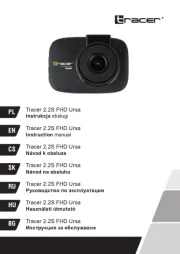
1 Juli 2025
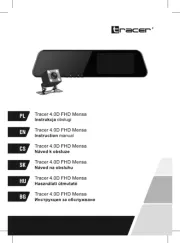
30 Juni 2025
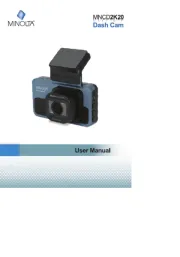
10 Juni 2025
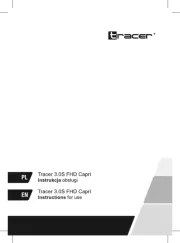
9 Juni 2025
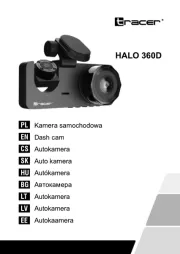
9 Juni 2025
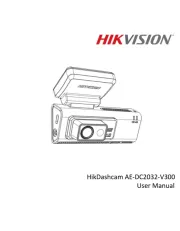
8 Juni 2025
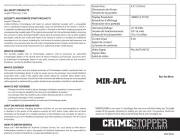
22 Mei 2025
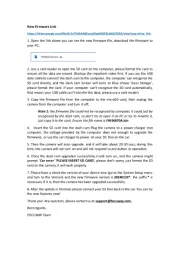
2 Mei 2025